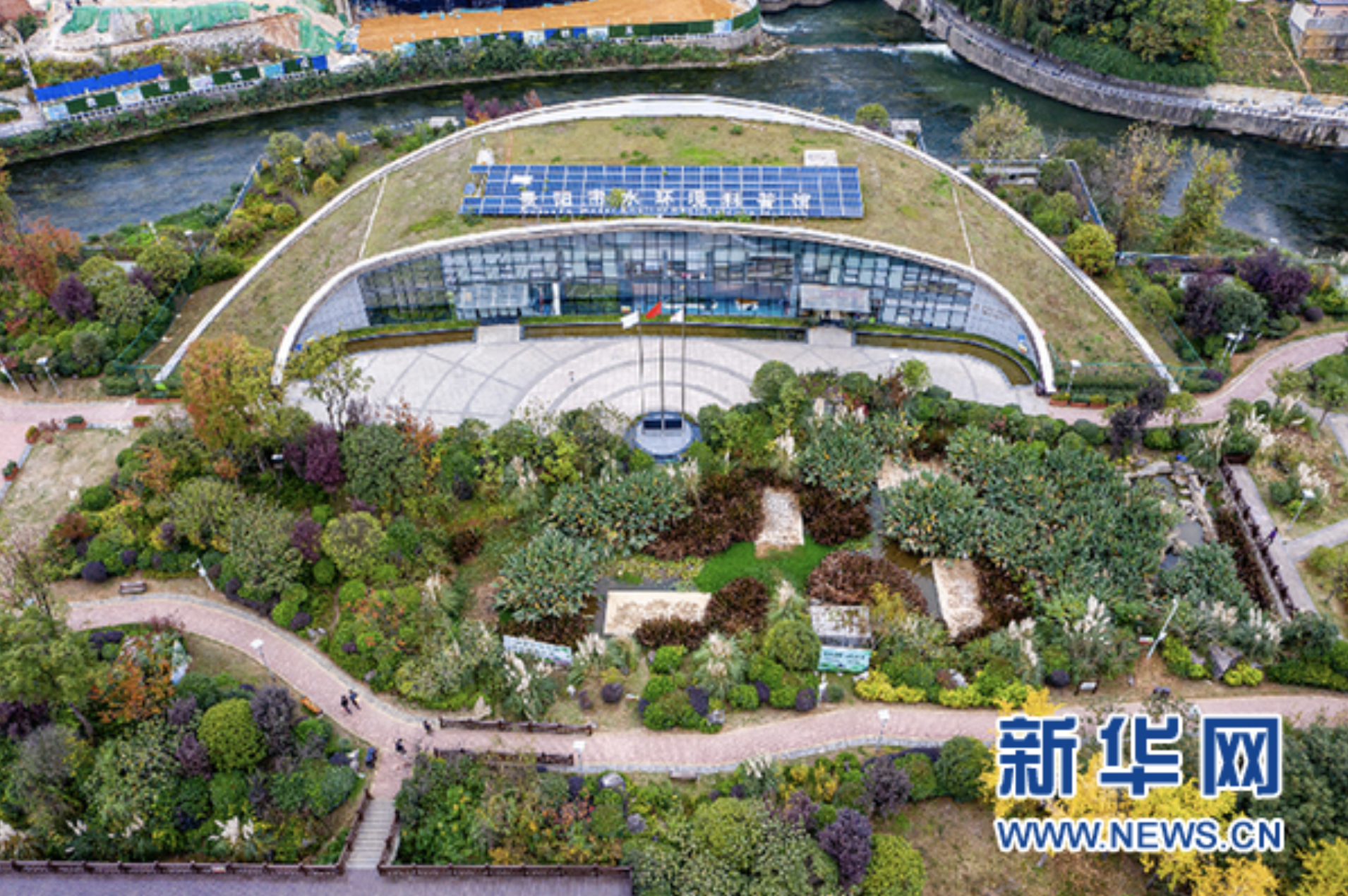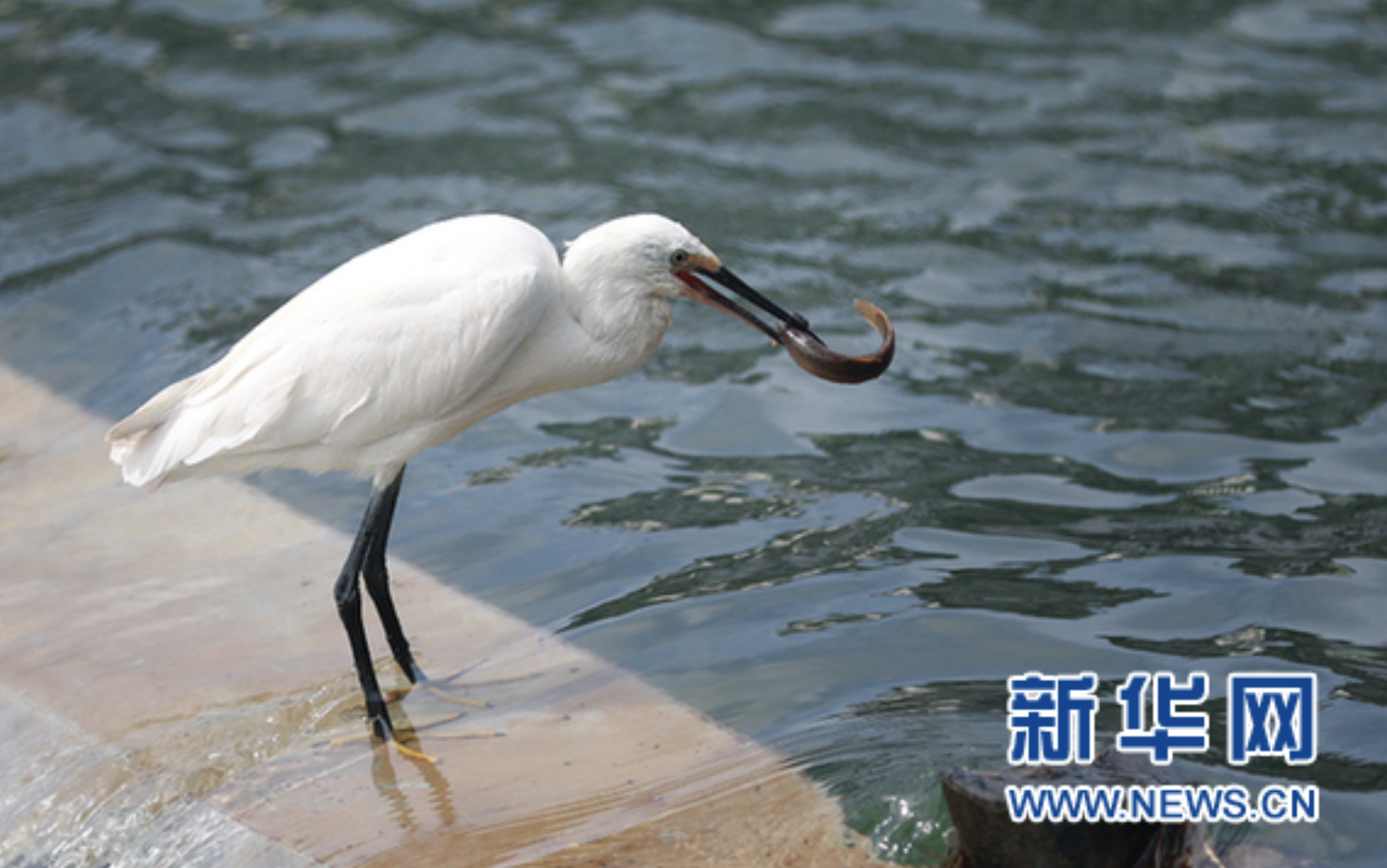XinHuanet|The Nanming River Project: A Successful Urban River Treatment Model in Guiyang
2021-07-11Xinhuanet, Guiyang, July 11 (Lu Zhijia) Nanming River, the mother river of Guiyang,used to be a black and odorous river. The water quality in the downtown section remained Category V (poor) for a long time. In recent years, Guiyang decidesto control sewage discharge section by section and has achieved preliminary success. The city has successfully explored a new path for comprehensive river treatment.

A section of the Nanming River on July 10. By courtesy of Lu Zhijia, Xinhuanet
Centralized to decentralized
Guiyang City is built next to the river, which is an important ecological barrier to defend the upper reaches of the Yangtze River and the Pearl River. The river section through the central city is about 50 kilometers long. There is a population of about 3.1 million in the basin area, accounting for about 62% of the total population in the city, where most of the urban citizens live here and business activities take place here.
With the rapid advancement of industrialization and urbanization, the Nanming River deteriorated further due to serious pollution, becoming a “lifeless river”.
“The vast majority of cities at home and abroad approach urban sewage treatment with large-scale and centralized sewage treatment plants in the downstream of rivers. This method has been followed for more than 100 years”, said Kong Hainan, Chair Professor, School of Environmental Science and Engineering, Shanghai Jiao Tong University in an interview in Guiyang.
Guiyang is one of these cities. The city used to rely on the downstream sewage treatment plants for the centralized treatment of pollutants. However, the construction and maintenance work in such plants prove to be a challenge. The drainage interceptor ditch and treatment plants are easily overloaded, becoming vulnerable to sewage leakage and overflow along the way.

People walking along the Nanming River on July 10. By courtesy of Lu Zhijia, Xinhuanet
“Obviously, this model is unsustainable to Guiyang since Guiyang is located in the karst region and subject to physical water scarcity”, said Liu Chuxia, Deputy Director of the Guiyang Water Affairs Administration. With limited surface runoff, the Nanming River requires water be replenished to upstream after it is treated downstream. “However, transporting water to the upstream through the pipeline is extremely costly.”
In 2012, Guiyang improved the traditional method after initiating the Nanming River comprehensive treatment project. Guided by the principle of “appropriate concentration, on-site treatment, and local reuse”, the city has divided the river into responsible segments and built sewage treatment plants in areas severely polluted. The local government requires that new communities along the river be equipped with sewage treatment facilities. The goal is to push the transformation of river treatment from the previous “centralized processing at the endpoint” to “front-end reduction and mitigation in the middle”.
Guiyang has committed huge financial resources to the treatment of the Nanming River. It’s learned that RMB 7.591 billion has been spent since 2017. A total of 20 underground reclaimed water treatment plants have been built, including Wulichong, Xiaoguan, and Liuguangmen. Today there are 34 underground wastewater treatment plants along the Nanming River.
16 sewage plants have been relocated underground, becoming high quality “ecological assets”.
Sewage treatment plants must be built to carry out sewage treatment on site. However, traditional above ground sewage treatment plants not only produce noise and odor but also occupy massive urban land, affecting the development and utilization of surrounding areas.
CWEG, the investor of the Nanming River Comprehensive Treatment Project, proposes the principle “environmental friendliness, land consolidation, and resource utilization” after repeated surveys. The Company has come up with theDistributedUndergroundReclaimedWaterEcosystems, relocating the sewage treatment plant from above ground to underground.
Bright and clean, the Qingshan Underground Wastewater Treatment Plant along the Nanming River is covered by green plants. Many elderly people like to relax and do exercises here. It is obviously a city park with little traces of sewage plant. Qingshan Plant is the first underground reclaimed water plant in Guiyang City. The core sewage treatment system is buried more than 20 meters underground. The capacity of sewage treatment is 50,000 tons/day with effluent quality reaching the Class IV standard.
According to CWEG President Hou Feng, the Qingshan Plant was supposed to be built 30 kilometers downstream. The total cost of land acquisition and pipe network would reach RMB 735 million and the annual water transfer fee RMB 17 million. “Eventually, we decide to relocate the plant underground and build ecological park, water science museum, and parking lot on the ground. While effectively avoiding neighbor disputes, the facility can cycle 100% of the reclaimed water. Part of the reclaimed water can also be used for watering plants in the park”, said Hou.

Aerial view of Qingshan Underground Wastewater Treatment Plant. By courtesy of Xinhuanet
According to Hou Feng, the underground reclaimed water plant has been equipped with air purification systems to ensure that the gas emission meets the standard and minimize the impact on the surrounding residents.
The underground reclaimed water ecosystem in the Nanming River basin has spared around 4.2 km2of construction land and environment protection belts. A total of RMB 1.5 billion for pipeline network construction and land acquisition as well as about RMB 30 million for water transfer and supplementation have been saved each year.
According to data provided by Guiyang Water Affairs Administration, the reclaimed water plants along the Nanming River can supply over 1.5 million tons of ecological compensation water to the river every day. As a result, over 500 million tons of water could be replenished every year. In addition, Guiyang has also rebuilt 19 large drainage ditches. With measures such as ditch reconstruction, dredging, and ecosystem construction, the city has treated 36,000 tons of running water and contributed 33,000 tons of clean water to the river per day. While supplementing the ecological water, these measures have effectively reduced the load on sewage interception ditches and sewage treatment plants.
“Currently, 25 black and smelly water sections along the Nanming River have been eliminated. The water quality of 7 tributaries has all reached the standard. The water quality of the central city section has reached Class IV (stable), and some sections have reached Class III.” Liu Chuxia believes that the success of Nanming River treatment model provides a “Guiyang solution” to other cities.
We not only treat sewage water but also pursue the restoration of biodiversity.
“Normally, a sewage treatment plant is to import sewage, treat sewage by microorganisms or physical means, and discharge sewage after it reaches the national standard. Then the task is done. But Guiyang aims higher”. Kong Hainan, an industry expert, has been fully involved in the Nanming River project since day 1. In his opinion, the Nanming River project means not only clear water and green banks, but also a complete ecosystem. The goal of Guiyang is to make sure the Nanming River stays clean permanently and provides citizens with a sound ecological environment.
The treatment includes the effort to transform the flap dam, control the river at a low level, and increase the dissolved oxygen in the water. On the one hand, it could prevent the pollutants generated by the anaerobic reaction from depositing in the river; on the other, it can create a perfect environment for the growth of aquatic plants and wildlife in the Nanming River.
Liu Chuxia said that they used to carry out large-scale dredging along Nanming River every two years. “After the comprehensive treatment project was carried out, the water environment continued to improve. No dredging is required for 8 consecutive years.”
“We’ve also introduced aquatic plants to the river. The aquatic plants grow naturally under the sun. Now the coverage rate of aquatic plants in the Nanming River is about 80%.” Said Kong Hainan. With 8 years of systematic treatment, the Nanming River has regained its vitality. You can even see flocks of egrets flying above the river.

An egret hunting on the Nanming River on July 10. By courtesy of Lu Zhijia, Xinhuanet
“Why do egrets return? Because fish and shrimps are increasing in the river. Egrets is also a direct evidence that the water ecological environment becomes favorable,” said Kong Hainan, who stated that the technical team aspires to restore more native flora and fauna in the Nanming River.
To enhance the ecological landscape of Nanming River, Guiyang has also built wetland parks, leisure squares, and water space along the river. By implementing landscape renovation and lighting projects, the city vows to achieve the harmony of nature and city and build the Nanming River into a beautiful urban landscape.
The transformation of Nanming River indeed benefits local citizens. Mrs. Zhu, a Guiyang citizen who has lived on the riverside for more than 20 years, is leading a cozy life near river. “The Nanming River used to be stinky. Residents chose to distance themselves from the river. Great changes have taken place in the past few years. The water has become clear and odorless. The scenery is truly amazing. I walk along the river almost every day just like visiting a park.”
link:http://www.gz.xinhuanet.com/2021-07/11/c_1127641957.htm
 中国水环境集团
中国水环境集团









